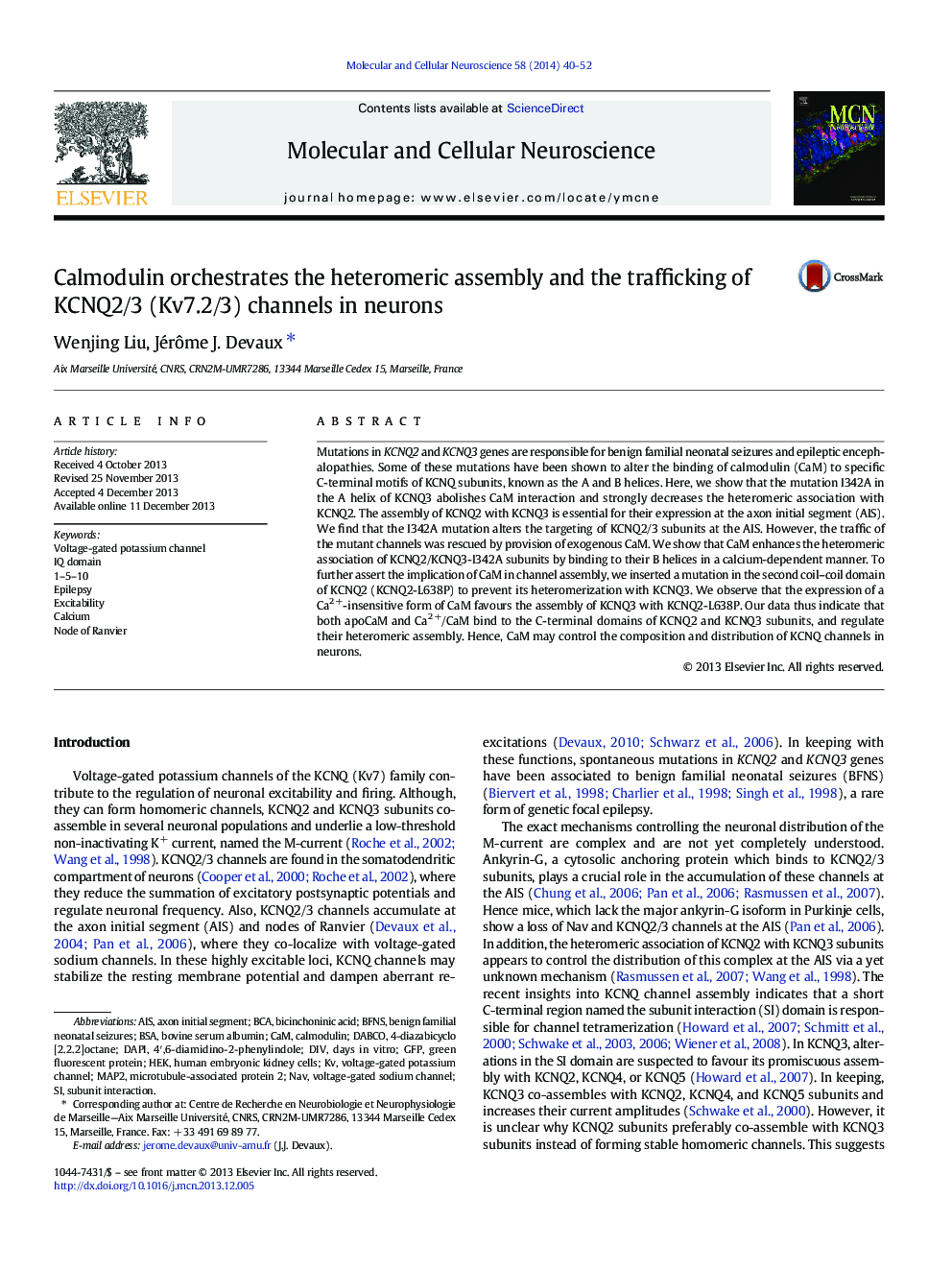| Article ID | Journal | Published Year | Pages | File Type |
|---|---|---|---|---|
| 2198491 | Molecular and Cellular Neuroscience | 2014 | 13 Pages |
Mutations in KCNQ2 and KCNQ3 genes are responsible for benign familial neonatal seizures and epileptic encephalopathies. Some of these mutations have been shown to alter the binding of calmodulin (CaM) to specific C-terminal motifs of KCNQ subunits, known as the A and B helices. Here, we show that the mutation I342A in the A helix of KCNQ3 abolishes CaM interaction and strongly decreases the heteromeric association with KCNQ2. The assembly of KCNQ2 with KCNQ3 is essential for their expression at the axon initial segment (AIS). We find that the I342A mutation alters the targeting of KCNQ2/3 subunits at the AIS. However, the traffic of the mutant channels was rescued by provision of exogenous CaM. We show that CaM enhances the heteromeric association of KCNQ2/KCNQ3-I342A subunits by binding to their B helices in a calcium-dependent manner. To further assert the implication of CaM in channel assembly, we inserted a mutation in the second coil–coil domain of KCNQ2 (KCNQ2-L638P) to prevent its heteromerization with KCNQ3. We observe that the expression of a Ca2 +-insensitive form of CaM favours the assembly of KCNQ3 with KCNQ2-L638P. Our data thus indicate that both apoCaM and Ca2 +/CaM bind to the C-terminal domains of KCNQ2 and KCNQ3 subunits, and regulate their heteromeric assembly. Hence, CaM may control the composition and distribution of KCNQ channels in neurons.
